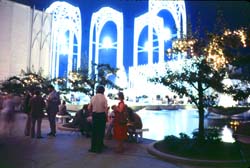One of my most agreeable memories of life in Seattle is of a sunny August evening under the arches of the Pacific Science Center. The occasion was a party celebrating the foundation of a society to promote interest in and appreciation of wines made in the Pacific Northwest. A heady feeling pervaded the crowd that night—a sense of new beginnings and a rosy future.
Even the most optimistic attendee surely couldn’t have guessed just how rosy the future would actually turn out to be. There were no more than half a dozen serious winemakers in the Northwest at the time, and Washington was known to the wine world, if at all, as a producer of cheap, sweet, high-alcohol beverages targeted to the curbstone trade. Thanks in no small measure to that fledging Enological Society, wine is now one of Washington’s most widely known agricultural products, with a growing prestige even beyond the boundaries of North America.
The success of Washington wine has not been entirely kind to the organization founded back in 1974. The number of institutions vying for the attention of the wine crowd has grown faster than the crowd itself. Not a day of the week passes without a tasting at a wine shop or supermarket; restaurants compete to craft tasting menus to accompany flights from high-end wineries. Above all, the state-subsidized Washington Wine Commission looms over the scene with its huge Taste Washington and Auction of Washington Wines events. The Enological Society began to vanish beneath the luxurious overgrowth.
That’s why last year the group embarked on a plan to refocus itself for a more competitive era. One of the first consequences: eliminating the rather daunting “Enological” and changing the organization’s name to the straightforward “Seattle Wine Society.” There was no need to reconfigure the society’s monthly tasting program, which routinely draws hundreds of eager tasters. It was the group’s annual Wine & Food Festival that stood in need of rebranding to distinguish it from the competition. This year’s 30th anniversary celebration on Saturday, Aug. 7, kicks off the campaign: to make the Wine Society a bridge for wine lovers who want to get beyond mere consuming and tasting to a deeper appreciation and knowledge of the world of wine.
The festival has always offered attendees an extraordinary opportunity to match their own tastes against those of some of the region’s and world’s most refined wine palates. In the days immediately preceding the festival, expert tasters convene to sample and evaluate 200 Northwest wines—about a fifth of the region’s production—and, after often vigorous argument, award the finest gold, silver, and bronze medals. Since tastes and wine styles differ, the judges aren’t required to award just one gold in the chardonnay category, for example; a big fat, oaky chard and a lean, acidic, stainless-steel-matured version can both wear golds round their necks if both are remarkable expressions of the winemakers’ art.
Every medal winner—every wine tasted, in fact—is available for festival attendees to sample. There’s no need to buy a bottle on the strength of an expert’s rating; find out in advance if your idea of what chardonnay ought to taste like matches that of the professionals. If it does, so much the better—you’ll be able to trust the ratings and descriptions in the trade publications when you go shopping. If your palate is a maverick, an event like the festival is even more valuable. (I had to learn the hard, expensive way that when Wine Spectator gives a California chardonnay 94 points, I should keep my wallet firmly in my pocket.)
The newly refocused Wine Society is planning to supplement its ongoing monthly tastings with other public events focused on more broadly educational topics. Even the most casual wine drinker is immeasurably more sophisticated today than 30 years ago, but winemakers’ sophistication has grown even more, and the information gap between maker and consumer has opened almost too far to bridge. To take chardonnay as an example once more: Perhaps the most significant influence on a chard’s impact, apart from oak or no-oak aging, is so-called malolactic fermentation; but without at least a little understanding of the microbiology of winemaking, the term is so much buzz, and reference books are singularly unhelpful on the subject.
Likewise the dozens of diseases and conditions which can deprive wine of aroma and flavor: There’s no way reading about “cork taint” will train you to recognize it. Seminars with sympathetic, experienced teachers can turn you into a happier wine drinker and help you spot the boasters and phonies who prosper by exploiting the consumer’s timidity about expressing honest opinions. If you’ve been thinking about getting more serious about wine, the 30th anniversary Wine & Food Festival would be a good place to start. See you there?








